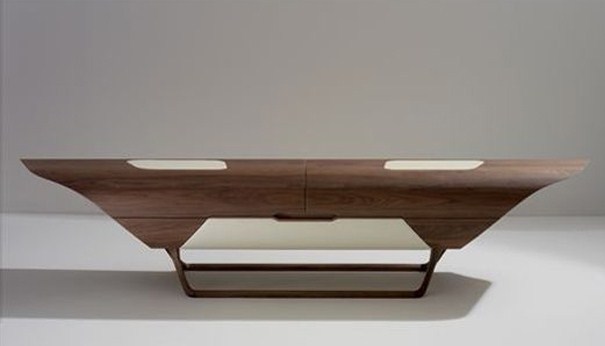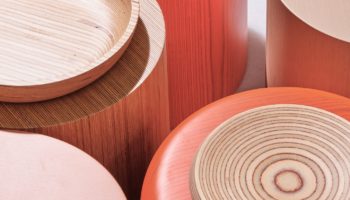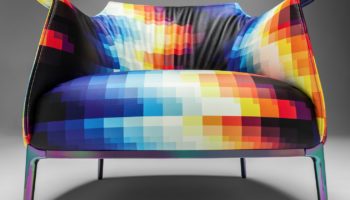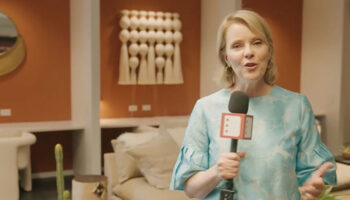Noé Duchaufour-Lawrance’s Mantra for Ceccotti: Reinterpreting Art Nouveau
Noé Duchaufour-Lawrance has an uncanny ability to reinterpret design history. Manta, a furniture collection for the Italian company Ceccotti, signifies the designer’s modern slant on Art Nouveau. As revealed in an interview with Amy Serafin for Surface Magazine, these sinuous nautical forms were influenced by the Belle Epoque and Duchaufour-Lawrence’s childhood spent on the Brittany coast. Serafin described the sculptor and furniture designer as having “established himself as the go-to guy for history-steeped projects that are in dire need of a 21st century booster shot.” Manta exemplifies Serafin’s statement.
Mantra sideboard. Designed by Noé Duchaufour-Lawrance for Ceccotti.
The special edition collection of furniture (a sideboard, desk and armchair) weaves together the past and present through historical references reinterpreted in a contemporary language. Not to mention this collection is limited edition, as only 20 pieces were made (Milano 2006). The slim and sinuous profiles are made possible by carbon fiber. The sense of weightlessness and flight (particularly in the Manta desk) serves a departure from the implied solidity and heaviness of wood construction. The pieces float off of the ground on their narrow frames; the desk appearing to be in flight and the sideboard seemingly winged. These affects require skillful woodworking techniques and extreme attention to detail. The line is finished in leather and in American walnut.




Immediately following the creation of this furniture suite, Duchaufour-Lawrance designed the restaurant Senderens, again putting his signature stamp on Art Nouveau. “I go to a place and let it talk to me, to understand the ambiance and what I want to express,” he explains, in an interview with Serafin. “I don’t get caught up in history because it often bogs you down.” The designer also created the Buonanotte Valentina bed for Ceccotti, a marriage of decadence and simplicity.




Leave a Reply